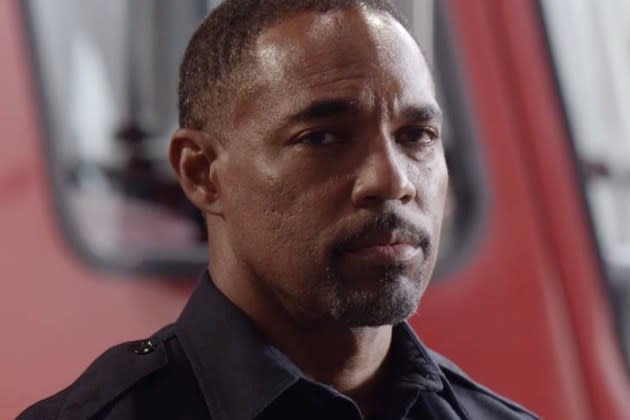Why ABC Canceled ‘Station 19’

The sirens you hear on social media are the sounds of diehard Station 19 fans sounding the alarm over the cancellation of the Grey’s Anatomy spinoff.
The loud signal boosting ahead of what will be the seventh and final season of the firefighter drama comes after ABC on Dec. 8 announced that Station 19 will conclude with 10 episodes this year — the show’s shortest order since it debuted — like Grey’s — as a midseason replacement show when it launched in spring 2018.
More from The Hollywood Reporter
'Bachelorette' Star Rachel Lindsay, Bryan Abasolo to Divorce After Four Years of Marriage
Strike Outs: Broadcast Ratings Tumble Without Scripted Programming
With Station 19 and Grey’s serving as the only remaining shows on ABC produced by hitmaker Shonda Rhimes — who is now based exclusively at Netflix — why would the network ax one of its Thursday staples? The answer can be found in the math.
Station 19, which started off as a backdoor pilot in season 14 of Grey’s, finished the 2022-23 broadcast season as the No. 13 drama among the advertiser-coveted adults 18-49 demographic with a 0.71 rating (about 926,000 viewers). 911 — which makes the move from Fox to ABC this year — finished the season tied as the No. 1 broadcast drama (with NBC’s Chicago PD and Chicago Fire) in the key demographic with a 1.0 rating. Among total viewers, 911 averaged 7.1 million vs. 5.2 million for Station 19 with seven days of DVR (and not including streaming). Both shows are produced by Disney-owned studios with 20th Television behind 911 and ABC Signature doing Station 19.
For the 2021-22 season, 911 was the second-most-watched drama on broadcast in the demo (tied with NBC’s Chicago shows and behind only the final season of This Is Us) with a 1.3. Station 19 ranked 28th with a 0.9. For the 2020-21 season, 911 drew a 1.8 in the demo, while Station 19 had a 1.3.
Station 19, it’s also worth noting, has experienced drama behind the scenes as well as multiple showrunner changes, with creator Stacy McKee departing after season two and Krista Vernoff running both the firefighter spinoff and Grey’s up until the end of last season. Peter Paige (The Fosters) and Zoanne Clack (who had been with Grey’s since the pilot) take over as showrunners of Station 19 for its final season after Vernoff better integrated both shows. As previously reported, Station 19 will move from its perch as a lead-in for Grey’s on Thursdays at 8 p.m. to 10 p.m. starting March 14, with fellow first responder drama 911 kicking off the night and leading into Grey’s at 9 p.m. The move makes Station 19 less reliant on Grey’s, which will no doubt receive a viewership injection with a Ryan Murphy-produced lead-in.
Speaking of Murphy, the similarly prolific producer is back at Disney after a brief detour to Netflix and now has pieces of his 911 franchise at both ABC and Fox after the latter passed on a seventh season of the flagship drama as part of an effort to reduce costs. Sources say Fox was paying more than $9 million per episode for 911 while the spinoff, Lone Star, came in at $6 million to $7 million per hour.
ABC declined to comment further on the decision to end Station 19. The network said in a December statement that it looked forward to celebrating the show’s farewell season, which includes its landmark 100th episode.
Jaina Lee Ortiz, Jason George, Grey Damon, Barrett Doss, Jay Hayden and Danielle Savre are the remaining stars who have been with Station 19 since its debut. The series has said farewell to original castmembers Alberto Frezza, Okieriete Onaodowan and Miguel Sandoval and added current stars Boris Kodjoe, Grey’s alum Stefania Spampinato, Carlos Miranda, Josh Randall and Merle Dandridge over the years.
ABC isn’t alone in parting ways with aging scripted originals. As the television industry continues to contract following the end of the Peak TV boom, a number of veteran pricey scripted comedies and dramas are ending across broadcast with Station 19 joining CBS’ Blue Bloods (concluding with season 14), Bob Hearts Abishola (season five), SWAT (season seven) and Young Sheldon (season seven); The CW’s Superman & Lois (season four); and NBC’s La Brea (season three) and Magnum P.I. (season six). As scripted shows age, they continue to get more expensive. The cast of Blue Bloods, for example, took a 25 percent pay decrease in order to keep the show on the air for one final season.
Best of The Hollywood Reporter